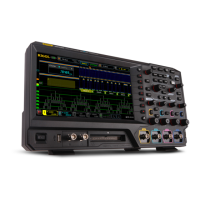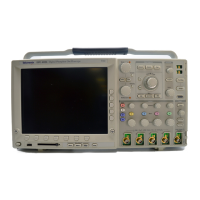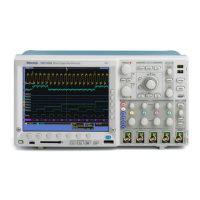Status and Events
Queue (2). If th
e corresponding bit in the ESER is also enabled (3), then the
ESB bit in the SBR is set to one (4).
When output is
sent to the Output Queue, the MAV bit in the SBR is set to one (5).
When a bit in the SBR is set to one and the corresponding bit in the SRER is
enabled (6)
, the MSS bit in the SBR is set to one and a service request is generated
(7). Bit 2 of the SBR (MAV) flags the presence of events in the queue.
Synchronization Methods
Although most GPIB commands are completed a lmost immediately after b eing
received by the instrument, some commands start a process that requires more
time. For example, once a single sequence acquisition command is executed,
depending upon the applied signals and trigger settings, it may be a few seconds
before the acquisition is complete. Rather than remain idle while the operation is
in proce
ss, the instrument will continue processing other commands. This means
that some operations will not be completed in the order that they were sent.
Someti
mes the result of an operation depends on the result of an earlier operation.
A first operation must complete before the next one gets processed. The
instrument status and event reporting system provides ways to do this.
For example, synchronization may be used to ensure that the c urve? query
command returns waveform data that is consistent with the current instrument
settings. You could use the following sequence to do this:
/** Sets up conditional acquis ition **/
ACQUIRE:STATE OFF
SELECT:CH1 ON
HORIZONTAL:RECORDLENGTH 500
AC
QUIRE:MODE SAMPLE
ACQUIRE:STOPAFTER COUNT 1
ACQUIRE:STOPAFTER:MODE CONDITION
/** Sets up the data preamble **/
DATA:START 1
DATA:STOP 500
DATA:ENCDG RIBINARY
/** Clear data and acquire waveforms until conditional
stop occu rs**/
ACQUIRE:DATA:CLEAR
ACQUIRE:STATE ON
/** Synch ronize the operations by using *W AI, Busy?,
*OPC, or *OPC?/
<Synchronization command>
/** Get the curve data **/
CURVE?
3-6 DSA/CSA/TDS8X00/B Series Programmer Manual

